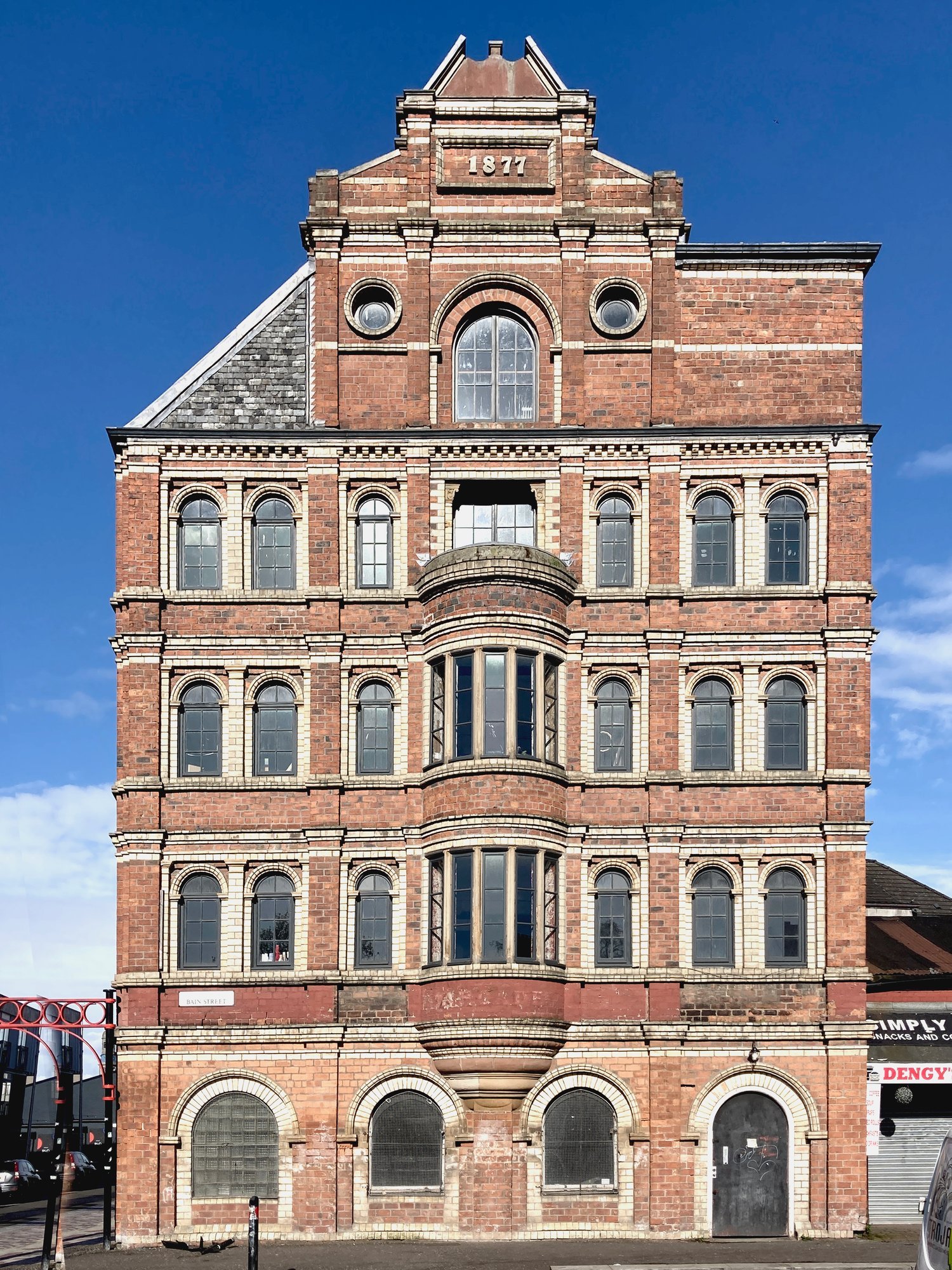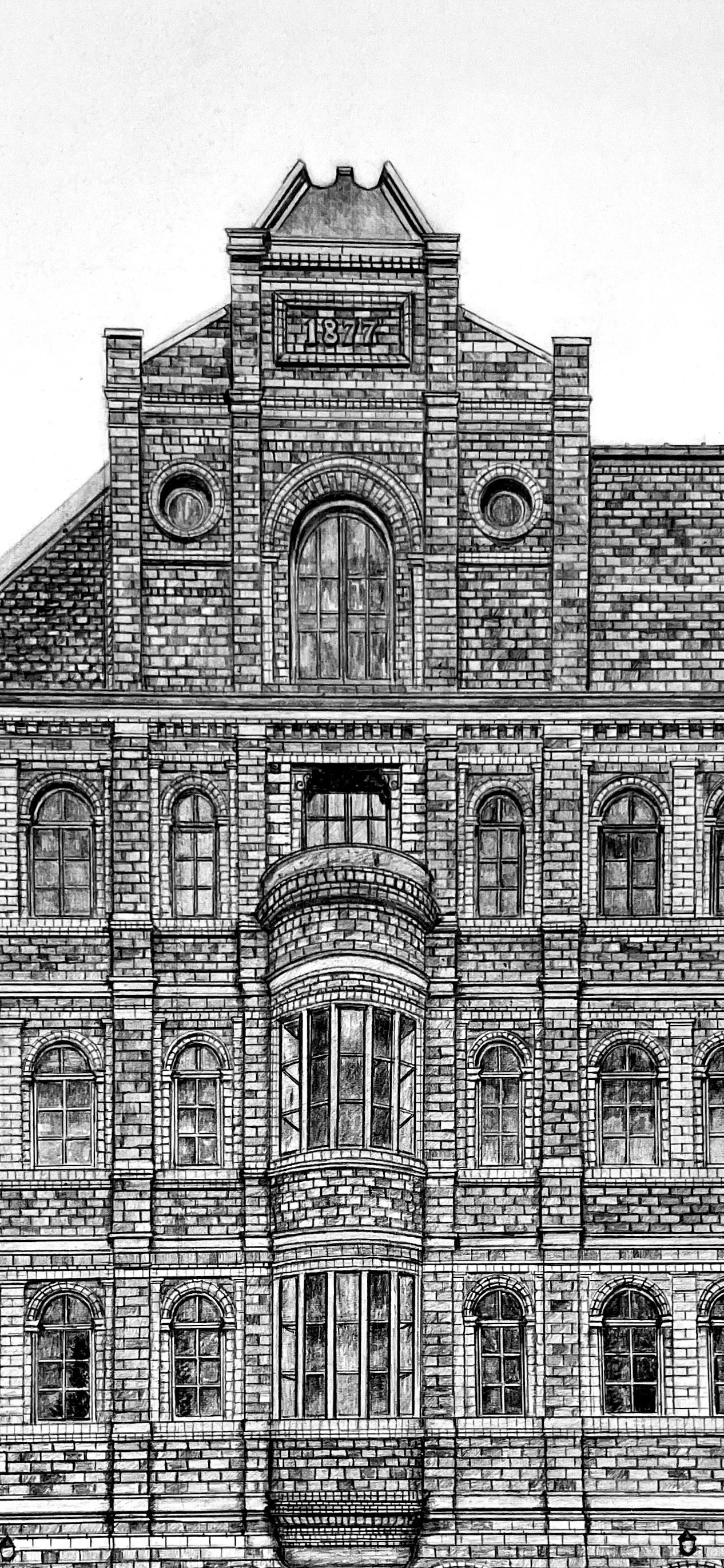Drawing The Pipe Factory
Pipe Factory at street view
Pipe Factory drawing
Finding Beauty in Brick: My Glasgow Architectural Drawing Journey
While working at Glasgow City Council, I often found myself wandering the streets during lunch breaks or after work, soaking in the incredible variety of buildings the city has to offer. It was during one of these quiet walks that I came across this particular building—its rich brickwork, intricate windows and presence of industrial charm instantly caught my eye and had me in awe.
I knew I had to draw it.
This piece became a personal project that I chipped away at over time. Life (as it does) got in the way—I had to pause while moving house, and finding the motivation to return to such a repetitive, detail-heavy subject took patience. But I'm so glad I stuck with it. What started as a casual sketch idea turned into one of my most satisfying works to date.
What drew me most to this building was its dominating industrial character—the solid brick patterns, arched windows, and the date stone proudly declaring "1877" at its top. The repetition of the bricks, while challenging to render, became oddly meditative as the drawing progressed. Each line reminded me of the physical effort and craftsmanship poured into the real building all those years ago.
Archival Photo of the Pipe Factory in the mid 1900’s
A Brief History: Glasgow’s Industrial Architecture
In the 19th century, Glasgow became one of the British Empire’s most important industrial cities—its shipyards, textile mills, and engineering works known worldwide. Buildings like this one were not only functional but designed to display solidity, permanence, and pride in the city’s industrial influence.
In 1877, in the Victorian era, when Glasgow was booming economically, red and yellow brick detailing, arched windows, and strong, symmetrical facades were typical of the time, influenced by both Italianate and Scottish baronial styles. Many such buildings served as warehouses, workshops, or offices—essential to in the city's industrial machine.
I love how these structures manage to balance ornamentation with practicality. They weren’t built to be fancy—they were meant to work—but that didn’t stop their designers from adding flourishes like the arched entryways, the bay windows, or the stone relief work you see here. It’s this blend of utility and quiet beauty that makes industrial architecture such an inspiration for me. Its a building that tells a story of ordinary people and their daily lives at time.
Reflection
Working on this drawing reminded me how important patience and persistence are—not only in art but in appreciating the world around you. It took time to see this building fully, to draw every brick, every curve, every shadow—but that time gave me a new level of respect for the craftsmanship of the past.
I’ve come to love industrial architecture even more because of this piece—and I hope this drawing helps others see the quiet strength and beauty in these often-overlooked buildings.







